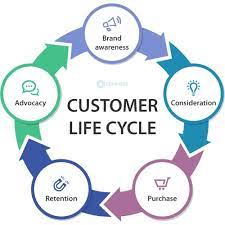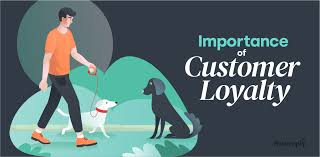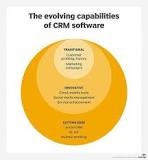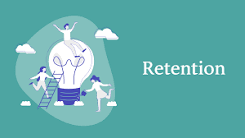Understanding the Stages of Customer Life Cycle: A Comprehensive Guide
April 25, 2025
Ron

Navigating the complex landscape of the customer life cycle management and engagement is akin to sailing a ship through turbulent waters. Both require careful planning, awareness of the environment, and strategic moves. In business, the Customer Life Cycle (CLC) serves as the compass to guide organizations in developing lasting relationships with their clients. Understanding the different stages of the CLC helps companies make informed decisions, nurture customer relationships, and maximize long-term value. Let’s delve into each stage to gain a holistic view of the customer journey.
Customer Lifecycle Stages:
Stage 1: Awareness
The Awareness stage is where prospective customers become aware of your brand, product, or service. This can occur through various channels digital marketing, such as social media, search engines, or word of mouth.
Strategies
- Content Marketing: Produce high-quality, informative content that addresses common questions or challenges your target audience faces.
- Social Media Advertising: Use targeted ads to capture the attention of prospective customers who may not know about your brand.
Metrics
- Web traffic
- Social media engagement rates
- Number of new subscribers or followers
Stage 2: Consideration
In the Consideration stage, potential customers evaluate different options. They compare features, benefits, prices, and reviews to decide if your offering fits their needs.
Strategies
- Product Demos: Offer live or pre-recorded demonstrations to showcase how your product or service works.
- Customer Testimonials: Share experiences from satisfied customers to build credibility.
Metrics
- Time spent on website/product pages
- Number of downloads for product guides or whitepapers
- Lead generation rates
Stage 3: Purchase
The Purchase stage is the point at which the prospect becomes a customer or repeat business by making a transaction. It’s crucial to make this process as smooth as possible to ensure a positive experience.
Strategies
- Streamlined Checkout Process: Eliminate unnecessary steps in the checkout process.
- Payment Options: Provide multiple payment options to cater to different customer preferences.
Metrics
- Conversion rates
- Average transaction value
- Cart abandonment rates
Stage 4: Onboarding
Onboarding occurs after the purchase and is critical for user engagement and retention. This stage involves educating the existing customer further about how to use the product effectively.
Strategies
- Welcome Emails: Send a series of emails to educate new customers about your product.
- Tutorial Videos: Create step-by-step guides that help users understand your product.
Metrics
- Onboarding completion rates
- Customer satisfaction scores during onboarding
- User engagement levels
Stage 5: Retention
Retention involves engaging existing customers to encourage repeat purchases or prolonged use of the service. Satisfied customers are also more likely to become advocates for your brand.
Strategies
- Customer Loyalty Programs: Implement points-based or tiered loyalty programs to reward repeat purchases.
- Personalized Recommendations: Use customer data to offer tailored product suggestions.
Metrics
- Customer Lifetime Value (CLV)
- Customer retention rates
- Net Promoter Score (NPS)
Stage 6: Advocacy
In the Advocacy stage, satisfied customers become brand ambassadors. They promote your business and educate potential customers through word-of-mouth, social media, and other channels.
Strategies
- User-Generated Content: Encourage customers to share their experiences on social media.
- Referral Programs: Offer incentives for customers to refer new clients.
Metrics
- Number of customer reviews or testimonials
- Referral rates
- Social media mentions and shares
Stage 7: Re-Engagement or Exit
Despite your best efforts, some customers may churn or become inactive. The Re-Engagement or Exit stage involves making a final attempt to win back lapsed customers or learning from their experiences to improve.
Strategies
- Re-Engagement Campaigns: Use targeted email marketing to entice inactive customers.
- Exit Surveys: Conduct surveys to understand why customers chose to leave.
Metrics
- Re-engagement rates
- Churn rates
- Feedback from exit surveys
What is the Customer Lifecycle?
Customer lifecycle refers to the steps a consumer passes through on the path to becoming a loyal customer. A customer goes through various steps regarding product discovery, purchase, and acquisition conversion retention and loyalty to the brand. A consumer goes through various stages before, during, and after they complete a transaction is called a customer’s journey.
What is a customer journey?
A customer journey refers to the path of interactions an individual has with your brand, produc and/or services. It describes both direct interactions paying customers, such as contacting a customer service team, to indirect interactions such as hearing about a brand at an event.
The customer journey can be interpreted as a map of unique interactions that any given customer has with your brand and marketing touchpoints. No one two customer journeys the journey is the same, and it’s the path each person takes via your website, customer service team and various other brand channels that enable marketers to adapt their marketing strategy accordingly to each customer.
Why is loyal customers important?

The importance of customer loyalty impacts almost every metric important to running a business. Without happy customers that continue to buy from you, the business won’t survive.
What is Customer Lifecycle Management?
Customer lifecycle management (CLM) evaluates several customer-related metrics over time to measure the performance of customer lifecycle management process of an organization. The intent of CLM is to source all the static and dynamic data, marketing processes, and value-added services under several departments.
What is Customer Lifecycle Marketing?
Customer lifecycle marketing is high-level approach to personalized customer communications, based on recognizing that different marketing messages and strategies work best for customers at different stages of their journey with a brand. To forge stronger relationships with your customers, you need to understand the distinct lifecycle stages that your customers go through and provide the highest value at each lifecycle stage first, in order to realize the most effective customer engagement, monetization and long-term retention.
What is the role of customer relationship management?

Customer relationship management (CRM) is the combination of practices, strategies and technologies that companies use to manage and analyze customer interactions and data throughout all stages of the customer’ lifecycle. The goal is to improve customer service relationships and assist in customer retention and drive sales growth.
What is customer lifecycle analysis?
Customer lifecycle analysis mostly focuses on customer behavior and the understanding of their purchase decisions. You can measure customer behavior at each stage of the customer’s customer lifecycle stage and use it to enhance the customer experience of your brand.
What is customer acquisition?
Customer acquisition is how a company turns a potential customer into a new customer. Some examples of customer acquisition include email marketing, using a CRM (customer relationship management) platform, or providing great customer service and earning a reputation for doing that well. The purpose of customer service teams and acquisition is to help a company earn more business, using the power of different teams, channels, and strategies.
What is the retention stage?

During the loyalty stage, the retention phase, you’re focused on getting customers to come back and buy again. You accomplish this by providing exceptional services and fostering relationships.
What Is a Marketing Analysts?
A marketing analysts is a professional that analyzes data to support a company’s marketing efforts. The marketing analyst might use the insights they find to help a company make better business decisions—like increasing revenue or optimizing marketing campaigns.
What is loyal customer base?
Customer loyalty describes an ongoing emotional relationship between you and your customer, manifesting itself by how willing a customer is to engage with and repeatedly purchase from you versus your competitors. Loyalty is the byproduct of a repeat customer who’s positive experience with you and works to create trust.
What makes a valuable customer?
Your most valuable customers are ones who buy more and buy often. Alex McEachern notes that a customer has a 27% chance of making another purchase after the first purchase, but a customer searches a 54% chance of making another purchase after the third purchase.
Marketing Automation
Marketing automation is software that handles routine marketing tasks without the need for human action. Common marketing automation workflows include email marketing, behavioral targeting, lead prioritization, and personalized advertising.
What is an acquisition stage?
Acquisition stage The first stage necessary for memory performance in which information about the stimuli and responses is encoded in the nervous system in some fashion. Consolidation The neurobiological processes whereby newly acquired information gets encoded in a relatively permanent form in the nervous system.
In Summary
The Customer Life Cycle isn’t a one-size-fits-all model; it can differ based on industry, target audience, and even individual customer preferences. However, understanding its general stages provides a framework for creating more targeted, effective marketing and customer engagement strategies. By focusing on each stage and the key metrics involved, businesses can improve customer satisfaction, increase retention, create lead acquisition content and ultimately, boost their bottom line.
What it’s Like to work with Underground Ecom?

$1.9M
EMAIL MARKETING REVENUE
287%
Increase in
Revenue

37% OF REVENUE THROUGH EMAIL MARKETING

$1.9M
EMAIL MARKETING REVENUE
287%
Increase in
Revenue

37% OF REVENUE THROUGH EMAIL MARKETING